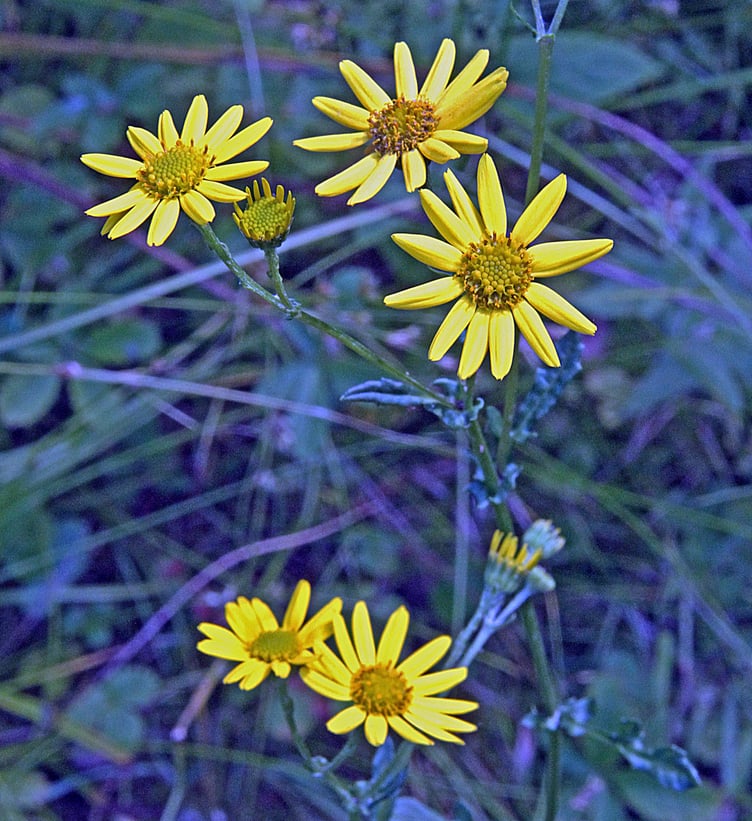There is a place near Callington and another close to Pillaton where it’s possible to walk beside the River Lynher.
For our first walk we parked at Newbridge and went down the path on the river bank and we noticed that there was not a lot of water running down the river but there were lots of fallen trees lying on the river bed.
Big flooding problem here when we get a lot of rain, I think.
We came across a rather thin ragwort plant in bloom on the river bank and, due to the lack of many flowers, I decided it was an Oxford ragwort.
This version of the ragwort family was introduced to Oxford during the 19th century, but after escaping from the city’s Botanic Gardens it spread across Britain on railway embankments and now grows on grassy banks, waste ground and even on old stone walls.
There was some lovely Honeysuckle decorating the short, leafy trees beside the path and we were both delighted to see a dark green fritillary butterfly feeding on a Buddleia flower beside the road.
This is one of only two places that I have seen this butterfly, the other location is down near Hepwell Bridge.
We drove over to Clapper Bridge for our second stroll of the day and, walking from the bridge along the quiet road towards Pillaton where there is a weir, the road is quiet but one has to be very careful if a car or lorry approaches not to keep in too far due to the barbed wire on the roadside fence.
I always thought this was illegal but Cornwall Council informed me that, due to the ‘low footfall’ on the road, they will not do anything about it.
In fact, when I brought this up with St Mellion Parish Council, they replied that they agreed with the landowner that anyone walking near the barbed wire would be trespassing on private land.
And there is me thinking that the tarmac road was a legal right-of-way.
Over by the weir there were lots of cow-wheat plants on the bank opposite the river.
These have small yellow/white tubular flowers that are so named because, it is said, cows that graze on them would produce the finest, yellow butter.
Another yellow flower is the Golden rod that grows on the roadside bank. Its tall stem is topped with a cluster of daisy-like flowers.
This plant’s history goes back to the 16th century when it was much in demand, due to the number of sword and knife fights and was used as a herb for healing wounds.
On the way home we stopped beside a field gate where I spotted some blue flowers and I was able to photograph some lovely Chicory blooms. Lovers of Camp coffee will know that the roots of this plant are roasted and ground up and then added to coffee beans to produce the drink.
Both of my parents were lovers of the cheaper coffee brew.

.jpeg?width=209&height=140&crop=209:145,smart&quality=75)



Comments
This article has no comments yet. Be the first to leave a comment.